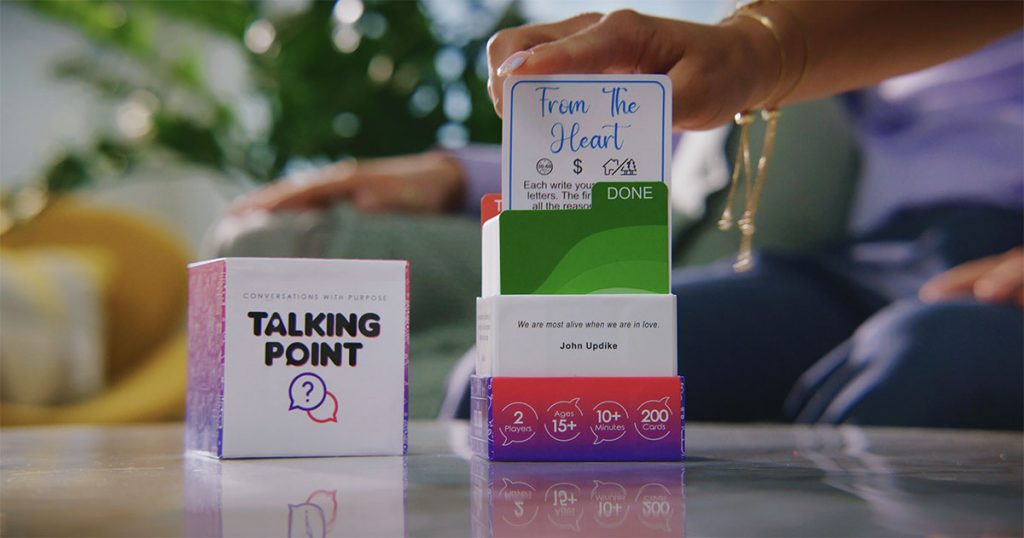Product videos are a powerful marketing tool that can help businesses reach a wider audience, generate leads, and increase sales. However, in order to know whether your product videos are actually effective, you need to be able to measure their success.
Incorporating a diverse range of product videos into your marketing strategy can significantly impact your sales and brand reputation. From product demos and testimonials to lifestyle-driven content and VR tours, each type of video offers unique benefits in engaging potential customers and driving conversions.
Among various video types, product videos stand out as a compelling way to showcase products and create lasting impressions on potential customers. First, we will delve into different types of product videos, exploring their benefits, supported by relevant statistics.
Understanding product videos: types and benefits

1. Product Demo Videos
Product demo videos are informative presentations that showcase a product’s features, functionality, and benefits in action. These product videos provide a comprehensive understanding of the product’s value proposition, making it easier for potential customers to visualize its usage and applications.
Benefits: Product demo videos help build trust and confidence in potential buyers. According to HubSpot, 72% of consumers prefer video content to learn about a product, making demo videos a valuable asset in the buying journey.
2. Unboxing Videos
Unboxing videos take viewers on a journey of excitement as they watch a product being unpacked and revealed for the first time. These product videos tap into consumers’ desire for transparency and authenticity, fostering a sense of connection with the brand.
Benefits: Unboxing videos create a sense of anticipation and excitement, influencing 62% of consumers to make a purchase, as reported by Google. This type of video can enhance a brand’s perceived value and inspire potential buyers to take action.
3. Testimonial Videos
Testimonial videos feature satisfied customers sharing their genuine experiences and satisfaction with a product. These product videos act as powerful social proof, building credibility and trust in the product’s quality and performance.
Benefits: Testimonial videos significantly impact purchasing decisions, with 92% of consumers stating that they trust recommendations from people they know, according to Nielsen. Incorporating positive testimonials into product videos can drive conversion rates and boost sales.
4. Lifestyle Videos
Lifestyle videos go beyond product features and focus on how the product fits seamlessly into consumers’ lives. They paint a picture of the product’s role in enhancing everyday experiences and lifestyle choices.
Benefits: Lifestyle product videos connect emotionally with consumers, aligning their aspirations with the brand’s image. Animoto reveals that 84% of consumers have been convinced to purchase a product after watching a brand’s video, highlighting the persuasive power of lifestyle-driven content.
5. Comparison Videos
Comparison videos juxtapose a product against its competitors, highlighting its unique advantages and superior qualities. These product videos help consumers make informed decisions by showcasing the product’s superiority.
Benefits: According to a survey by Wyzowl, 80% of consumers have been convinced to purchase a product after watching a brand’s video. Comparison videos present a compelling case for why a particular product is the better choice, increasing its chances of winning over potential customers.
6. Behind-the-Scenes Videos
Behind-the-scenes videos offer an exclusive glimpse into a brand’s creative process, manufacturing, or product development. These videos foster a sense of connection and transparency, enhancing the brand’s authenticity.
Benefits: Behind-the-scenes videos humanize a brand, resonating with consumers’ emotions and building a stronger brand affinity. A study by Stackla found that 86% of consumers value authenticity when deciding which brands to support, making this type of video highly relevant for businesses.
7. How-To Videos
How-To videos provide step-by-step instructions on using a product or performing specific tasks related to the product. These product videos empower consumers, showcasing the product’s versatility and applications.
Benefits: How-To videos boost customer satisfaction and reduce product returns, as customers gain confidence in using the product effectively. According to Wyzowl, 91% of consumers have used a how-to video to learn about a product.
8. Animated Explainer Videos
Animated explainer videos use engaging visuals and storytelling to simplify complex product features or concepts. They present information in a memorable and easily digestible manner.
Benefits: Animated explainer videos increase information retention by 15%, making them a valuable tool for educating potential customers. These videos can be particularly effective for startups or businesses with innovative products that require explanation.
9. Virtual Reality (VR) Product Tours
VR product tours provide an immersive experience, allowing potential customers to virtually interact with the product and explore its features and functionalities in a realistic setting.
Benefits: VR product tours revolutionize the customer experience, increasing engagement and making the product more memorable. Research by Ericsson ConsumerLab shows that VR content increases brand engagement by 27% and triggers an emotional response in 46% of consumers.
10. User-Generated Content (UGC) Videos
UGC videos feature content created by customers themselves, showcasing how they use and enjoy the product. UGC videos leverage the power of authentic and relatable content to influence potential buyers.
Benefits: UGC videos have a significant impact on purchasing decisions, with 93% of consumers finding user-generated content helpful when making a purchase decision (Yotpo). These product videos enhance the brand’s authenticity and create a sense of community around the product.
Measuring product videos’ success
To succeed in today’s competitive market, businesses need to leverage the persuasive power of product videos to captivate their audiences and forge meaningful connections. Understanding the behavioral economics behind each video type can help you craft a winning marketing strategy that elevates your brand, boosts sales, and creates lasting brand loyalty. So, get ready to embrace the world of product videos and harness their potential to take your business to new heights of success. There are a number of different ways to measure the success of product videos. Here are a few of the most common metrics:
1. Engagement

Unlocking the Power of Engagement: Driving Organic Reach and Informed Decision-Making
Engagement stands as a critical factor in amplifying your video’s organic reach, acting as a litmus test for its resonance with your audience. When a video resonates well with a segment of your audience, it’s likely to strike a chord with the broader audience as well, fostering organic growth and increasing its visibility. Understanding the importance of engagement enables marketers to harness its potential for effective video marketing strategies.
The Impact of Engagement on Organic Reach:
Engagement metrics, such as likes, shares, comments, and click-through rates, directly influence product videos’ organic reach. Social media algorithms favor content that receives higher levels of engagement, as it indicates that the content is valuable and resonates with the audience. According to a study by Hootsuite, videos on Facebook with higher engagement rates are more likely to be featured in users’ feeds, leading to increased exposure.
Qualitative Insights from Comments:
Comments offer valuable qualitative data for marketers, providing insights into the emotional impact of product videos on viewers. By analyzing comments, marketers can gauge the sentiment of their audience, identifying whether the video inspired, provoked controversy, or triggered other emotional responses. This information helps in shaping future video content to align with the audience’s preferences and interests.
Data-Driven Video Topics:
Understanding viewer sentiment through comments can guide marketers in choosing relevant and resonant video topics for future content creation. Analyzing the most engaging videos and their respective topics can help identify recurring themes that strike a chord with the audience. This data-driven approach enables marketers to focus on producing content that resonates strongly with their target audience.
The Power of Social Shares:
Social shares offer valuable insights into your audience’s brand affinity and loyalty. When viewers share your video content on their social platforms, they act as brand advocates, showcasing their trust and support for your brand. According to a study by Nielsen, 83% of consumers trust recommendations from friends and family, highlighting the power of word-of-mouth marketing.
Building Brand Credibility:
Social shares contribute to building your brand’s credibility in the eyes of potential customers. When individuals share your video content, they associate themselves with your brand, validating its value and relevance. This association enhances your brand’s credibility and fosters trust among a wider audience, leading to increased brand loyalty and advocacy.
Word-of-Mouth Marketing:
Social sharing is one of the most effective forms of word-of-mouth marketing. When viewers share your video with their social circles, they are essentially recommending your brand and content to their peers. This peer-to-peer recommendation carries significant weight, as it stems from genuine enthusiasm and personal experience with your brand.
Conclusion:
Engagement plays a pivotal role in driving organic reach, as resonating with a segment of your audience can lead to broader appeal and increased visibility. By analyzing comments, marketers gain qualitative insights into audience sentiments and preferences, which inform data-driven video topics. Social shares serve as a powerful endorsement of your brand, building credibility and fueling word-of-mouth marketing. Embracing the power of engagement empowers marketers to create compelling and relevant video content that connects deeply with their audience, ultimately leading to stronger brand loyalty and continued success.
2. Conversion rate

Unlocking the Impact of Product Videos on Conversion Rate: Transforming Viewers into Valuable Leads and Customers
The conversion rate of your product videos is a vital metric that gauges the effectiveness of your video content in driving viewers to take desired actions, such as becoming a lead or making a purchase. It is a direct reflection of how well your product videos persuade and engage your audience, ultimately influencing their decision-making process. By testing and analyzing the impact of videos on your landing or product pages’ conversion rates, you gain valuable insights into the potency of video in conveying information and evoking excitement among your prospects.
Understanding Product Videos’ Influence on Conversion Rates:
The conversion rate is a quantitative measurement that reveals the percentage of viewers who take the desired action after watching your product videos. For instance, if a video on a product page leads to 20 purchases out of 100 viewers, the conversion rate is 20%. This metric enables businesses to assess the direct impact of video content on lead generation and sales, making it a crucial component of their marketing strategies.
The Power of Product Videos in Conveying Information:
Product videos have a unique ability to communicate complex information effectively and efficiently. According to a study by HubSpot, 72% of consumers prefer video content to learn about a product or service. By visually showcasing products, services, or ideas, product videos simplify the message and resonate with viewers, increasing the likelihood of conversion.
Eliciting Excitement and Emotional Connection:
Video content has a distinct advantage in evoking emotions and establishing a connection with viewers. The combination of visuals, audio, and storytelling creates a more immersive and emotionally resonant experience. According to a study by Google, emotionally charged video ads can lead to a 7.5% increase in purchase intent. By tapping into emotions, product videos can instill excitement and enthusiasm in prospects, driving them to take action.
Optimizing Landing and Product Pages:
Testing the impact of product videos on landing and product pages’ conversion rates allows businesses to optimize these crucial touchpoints. A/B testing, for instance, compares the performance of pages with and without videos, helping marketers identify which version drives higher conversion rates. According to a report by Unbounce, A/B testing can lead to an average conversion rate increase of 49%.
The Rise of Video in E-Commerce:
The rise of product videos in e-commerce has been remarkable, with consumers increasingly seeking video content before making purchase decisions. A study by Animoto found that 73% of consumers are more likely to buy a product after watching a video explaining it. This shift in consumer behavior highlights the immense potential of product videos to influence conversion rates positively.
Conclusion:
The conversion rate of your video is a powerful indicator of its impact on lead generation and sales. By analyzing how video content affects landing and product pages’ conversion rates, businesses gain valuable insights into its persuasive capabilities. Videos excel in conveying information concisely and evoking emotional connections, leading to higher engagement and conversion rates. As video continues to dominate e-commerce and content marketing, harnessing its potential becomes essential for driving success in the digital landscape. Embracing the power of video content empowers businesses to transform passive viewers into enthusiastic leads and loyal customers, ultimately fueling growth and success.
3. View count

Views: Unraveling the True Value of Video Engagement
Views are undoubtedly one of the most fundamental metrics in video marketing, offering insights into the reach and initial impact of your content. This metric represents the number of times your video has been viewed, providing an essential starting point to assess your video’s performance. However, it’s crucial to recognize that not all views hold equal significance, and delving deeper into viewer behavior can unearth valuable insights for optimizing your video strategy.
The Power of High-Quality Views:
While high view counts can be exciting, the real value lies in high-quality views, where viewers engage deeply with your content. In the digital age, capturing and retaining audience attention is paramount, and viewers who watch your entire video signify a genuine interest in your message and brand. According to a study by Wistia, videos that are shorter than 2 minutes have an average retention rate of about 60%, emphasizing the importance of captivating viewers early on.
The Importance of Watch Time:
Watch time, or the total amount of time viewers spend watching your video, is a key metric for measuring engagement. YouTube, one of the largest video platforms, considers watch time a critical factor in its algorithm to rank videos. As watch time increases, YouTube is more likely to recommend your video to other users, expanding your reach and potential audience.
User Intent and Video Duration:
Understanding user intent is essential when analyzing views and watch time. For instance, shorter product videos may perform well for capturing attention quickly, while longer videos can offer in-depth information and storytelling. According to a study by Vidyard, the average length of business-related videos is 10 minutes and 30 seconds, highlighting the importance of aligning video duration with the intended message and audience preferences.
Engaging Your Audience:
Encouraging viewer engagement through calls-to-action (CTAs) can contribute to higher-quality views. CTAs prompt viewers to take specific actions, such as subscribing to a channel, clicking a link, or leaving a comment. A study by Wistia found that videos with CTAs had an average click-through rate (CTR) of 16.95%, emphasizing the potential to drive audience interaction and conversions.
Retention and Video Effectiveness:
High retention rates indicate that your video effectively retains viewers’ attention throughout its duration. A study by HubSpot found that videos with high retention rates (over 60%) result in better user engagement, longer watch times, and increased likelihood of viewers taking the desired action, such as visiting a website or making a purchase.
Conclusion:
While views offer a valuable glimpse into your video’s initial reach, it’s essential to dive deeper into viewer behavior to assess engagement and video effectiveness. Focusing on high-quality views, watch time, user intent, audience engagement, and video retention can provide valuable insights for refining your video marketing strategy. Understanding the nuances of viewer behavior will empower you to create compelling, impactful videos that resonate with your audience, driving meaningful interactions and achieving your marketing goals.
4. Click-through rate

Mastering Click-Through Rate: Optimizing Viewer Engagement and Call-to-Action Placement
The click-through rate (CTR) is a critical metric that reflects how effectively your product videos motivate viewers to take a desired action, such as clicking on a link, subscribing to a channel, or visiting a website. It serves as a compass for understanding the success of your call-to-action (CTA) and fine-tuning your video’s engagement strategy. By analyzing audience retention graphs and CTR data, you can optimize the placement of your CTA to maximize viewer engagement and drive meaningful actions.
Understanding the Significance of CTR:
The click-through rate is calculated by dividing the number of clicks on your CTA by the total number of views. For instance, if your video received 1,000 views and generated 50 clicks, the CTR would be 5%. A high CTR indicates that your video successfully captures viewers’ interest and motivates them to take action.
Strategizing CTA Placement:
Audience retention graphs offer valuable insights into viewers’ behavior throughout your video. These graphs illustrate at what point viewers tend to drop off or stop watching. Analyzing this data can inform strategic CTA placement to ensure that more viewers reach the CTA and take action.
1. Placing CTA at the Beginning or Middle:
Considering that not all viewers watch videos all the way through, strategically placing the CTA at the beginning or middle of your video can increase its visibility and actionability. This way, even viewers who don’t watch the entire video still have the opportunity to engage with the CTA. A study by Wistia found that engagement is highest in the first 30 seconds of a video, making it a prime moment to introduce your CTA.
2. Crafting Engaging Content:
Creating captivating and compelling video content is key to keeping viewers engaged until the end. By crafting an engaging narrative, incorporating visuals, and using storytelling techniques, you can increase the likelihood of viewers watching your video in its entirety and reaching the CTA. According to a study by HubSpot, videos that tell a story increase engagement and emotional connection with viewers.
Optimizing for Complete Viewers:
Leaving your CTA at the end of your product videos may yield higher click-through rates than moving it to the middle or beginning. Viewers who watch your video all the way through are more likely to take action because they have invested time in consuming your content. According to a study by Brightcove, videos with a duration of 90 seconds or less have a retention rate of 53%, indicating the potential to maintain viewers’ attention until the end.
Conclusion:
Mastering click-through rate requires strategic CTA placement and engaging content creation. Analyzing audience retention graphs and CTR data empowers you to optimize your video’s call-to-action, ensuring that more viewers are motivated to take desired actions. By placing CTAs strategically and crafting compelling content, you can unlock the full potential of your product videos, capturing viewer interest and driving meaningful engagement. Embracing data-driven insights and focusing on viewer retention ultimately transforms your videos into powerful tools for achieving marketing goals and fostering lasting connections with your audience.
5. Subscriber/follower growth rate

Analyzing Follower/Subscriber Growth: Unveiling Video Success and Audience Insights
Follower/subscriber growth serves as a potent yardstick to gauge a video’s performance and its impact on expanding your brand’s reach. As the number of followers or subscribers increases, it signifies that your video content is resonating with new audiences and drawing them to your brand. The data gathered from this growth also offers valuable insights into your audience, helping you craft accurate buyer personas and produce high-quality content tailored to your viewers’ preferences.
The Significance of Follower/Subscriber Growth:
A surge in followers or subscribers is a clear indication that your video content has successfully attracted new viewers to engage with your brand. Whether it’s through social media platforms, YouTube channels, or email newsletters, the increasing number of followers showcases the video’s ability to establish a connection and build a loyal audience.
Understanding Your Audience:
Analyzing the kind of audience your video attracts is a treasure trove of data for businesses. By delving into the demographics, interests, and behaviors of your followers/subscribers, you gain valuable insights to create comprehensive buyer personas. For example, platforms like YouTube Studio and social media analytics offer in-depth audience analytics, revealing information about age, location, and engagement levels.
Creating Tailored, High-Quality Content:
A thorough understanding of your audience empowers you to create tailored content that resonates with their preferences. By identifying the topics, formats, and storytelling techniques that captivate your audience, you can refine your video strategy to produce content that consistently attracts and retains viewers. Data-driven content creation ensures that your videos remain relevant and compelling.
Benchmarking Video Performance:
Follower/subscriber growth serves as an essential benchmark for measuring video success over time. As you publish new content and observe how it impacts follower/subscriber growth, you gain insights into which product videos perform exceptionally well and contribute significantly to brand growth. These high-performing product videos can serve as models for future content creation.
Numerical Impact of Follower/Subscriber Growth:
For instance, consider a scenario where a video campaign on a social media platform garners 1,000 new followers during its run. This growth represents a 10% increase in the brand’s overall follower count, indicating significant audience engagement. Similarly, if a YouTube video drives 500 new subscribers to a channel, it showcases the video’s persuasive power in attracting a dedicated viewership.
Conclusion:
Follower/subscriber growth is a powerful metric that reflects the performance and appeal of your video content. By observing the rise in followers or subscribers, businesses can gauge the success of their video marketing efforts in reaching new audiences and building brand loyalty. The insights gained from this growth data are invaluable for shaping buyer personas and creating content that deeply resonates with viewers. Embracing the power of follower/subscriber growth allows businesses to continuously refine their video strategies, adapt to audience preferences, and solidify their position as influential and engaging brands in the digital landscape.
6. Average view duration

Unlocking Video Engagement: Decoding Average View Duration for Optimal Impact
Average view duration emerges as a potent metric in the realm of video analytics, providing essential insights into your audience’s engagement with your content. Calculated by dividing the total watch time of your video by the total number of video plays, including replays, this metric reveals the average duration viewers spend watching your video. This powerful data point unveils your audience’s video length preference, guiding you in creating captivating content that holds their attention and maximizes video impact.
Understanding Average View Duration:
The average view duration represents the average length of time viewers spend watching your video. For example, if a video with a total watch time of 120 seconds receives 100 video plays, the average view duration would be 1.2 seconds. This metric offers valuable insights into how engaging your video content is and how effectively it holds the audience’s attention.
The Significance of Average View Duration:
Average view duration is more than just a statistic; it delves into the core of viewer behavior. By examining this metric, you gain a profound understanding of whether your video content resonates with your audience and captures their interest throughout its duration. Higher average view durations indicate engaging and captivating content, while lower durations may suggest a need for improvement or content optimization.
Decoding Video Length Preferences:
Analyzing average view duration helps you uncover your audience’s preferred video length. By observing the trends in view duration across various videos, you can identify the sweet spot that aligns with your audience’s attention span. For instance, if shorter product videos consistently receive higher average view durations, it signals a preference for concise and impactful content.
Optimizing Video Length:
Data-driven insights from average view duration empower you to optimize video length for maximum impact. If a 45-second video yields an average view duration of 30 seconds, it implies that viewers tend to drop off before the video concludes. In this scenario, trimming the video by 15 seconds can lead to higher engagement and retention, catering to your audience’s preferences.
Numerical Impact of Average View Duration:
For instance, consider a series of tutorial videos produced by a brand. Video A has a total watch time of 300 seconds and receives 100 video plays, resulting in an average view duration of 3 seconds. Video B, with a total watch time of 600 seconds and 100 video plays, records an average view duration of 6 seconds. In this scenario, Video B’s longer average view duration indicates better viewer engagement and interest in the content.
Conclusion:
Average view duration serves as a powerful indicator of audience engagement and video content effectiveness. By uncovering your audience’s video length preference, you can tailor your content to match their attention spans, ensuring higher engagement and impact. Embracing the insights from average view duration allows you to optimize video length, create compelling content, and continuously improve your video strategy to forge deeper connections with your audience.
Conclusion

In conclusion, understanding video metrics is essential for marketers to gauge the effectiveness of their video content and make data-driven decisions that align with their overall marketing goals. While a multitude of video metrics exists, certain key metrics stand out as particularly significant to make informed business decisions in regards to marketing video strategy.
Firstly, focusing on the play rate enables marketers to understand how engaging their video thumbnails and titles are in attracting viewers. A high play rate indicates that the content resonates with the target audience, driving them to click and start watching. This metric can serve as a reliable indicator of your product video’s initial impact and appeal.
Secondly, the average view duration provides valuable insights into audience engagement and content quality. By determining the average time viewers spend watching your product videos, you gain a deeper understanding of their level of interest and attention span. Armed with this knowledge, you can optimize video length and structure to retain viewers and maximize your message’s effectiveness.
Next, completion rate is a critical metric for assessing your product videos’ ability to hold viewers’ attention until the end. A high completion rate indicates that your content is captivating and delivers value, leading to greater chances of viewers taking the desired action, whether it’s subscribing to a channel or visiting your website.
Another essential metric is click-through rate (CTR), which measures how well your product videos encourage viewers to take a desired action. A high CTR suggests that your call-to-action and video content are compelling and persuasive, motivating viewers to click on relevant links or explore your offerings further.
Finally, follower/subscriber growth plays a pivotal role in measuring the impact of your product videos, and marketing videos in general, in expanding your brand’s reach and attracting new audiences. Tracking the growth of your audience allows you to understand their preferences and interests, creating targeted content that resonates deeply with your viewers.
Ultimately, armed with these key video metrics, marketers can make well-informed decisions to optimize their video strategies and drive meaningful results for their brands. By harnessing the power of video analytics, marketers can fine-tune their content, captivate their audiences, and forge lasting connections that lead to increased brand loyalty and business success. Embracing video metrics as crucial performance indicators empowers marketers to confidently demonstrate the value of video marketing initiatives.
Looking for a video production company that specializes in product videos? Contact us today to learn more about how we can help you create videos that will generate leads and sales.
AzonVidz Media is a video production company that specializes in product videos. We have a team of experienced video producers who can help you create videos that are informative, engaging, and visually appealing. Please see our portfolio references for inspiration. Looking forward to help you and your brand scale and prosper.
Contact us today to learn more about how we can help you create product videos that generate leads and sales.

Vlad Alexander
Vlad is the Creative Director at AzonVidz Media. He’s been in the video production and content marketing industry since 2011, starting as a freelance videographer and eventually moving up the ranks to his current role. He loves a good workout at the gym, constantly reads business books and enjoys creating beautiful and meaningful content!




